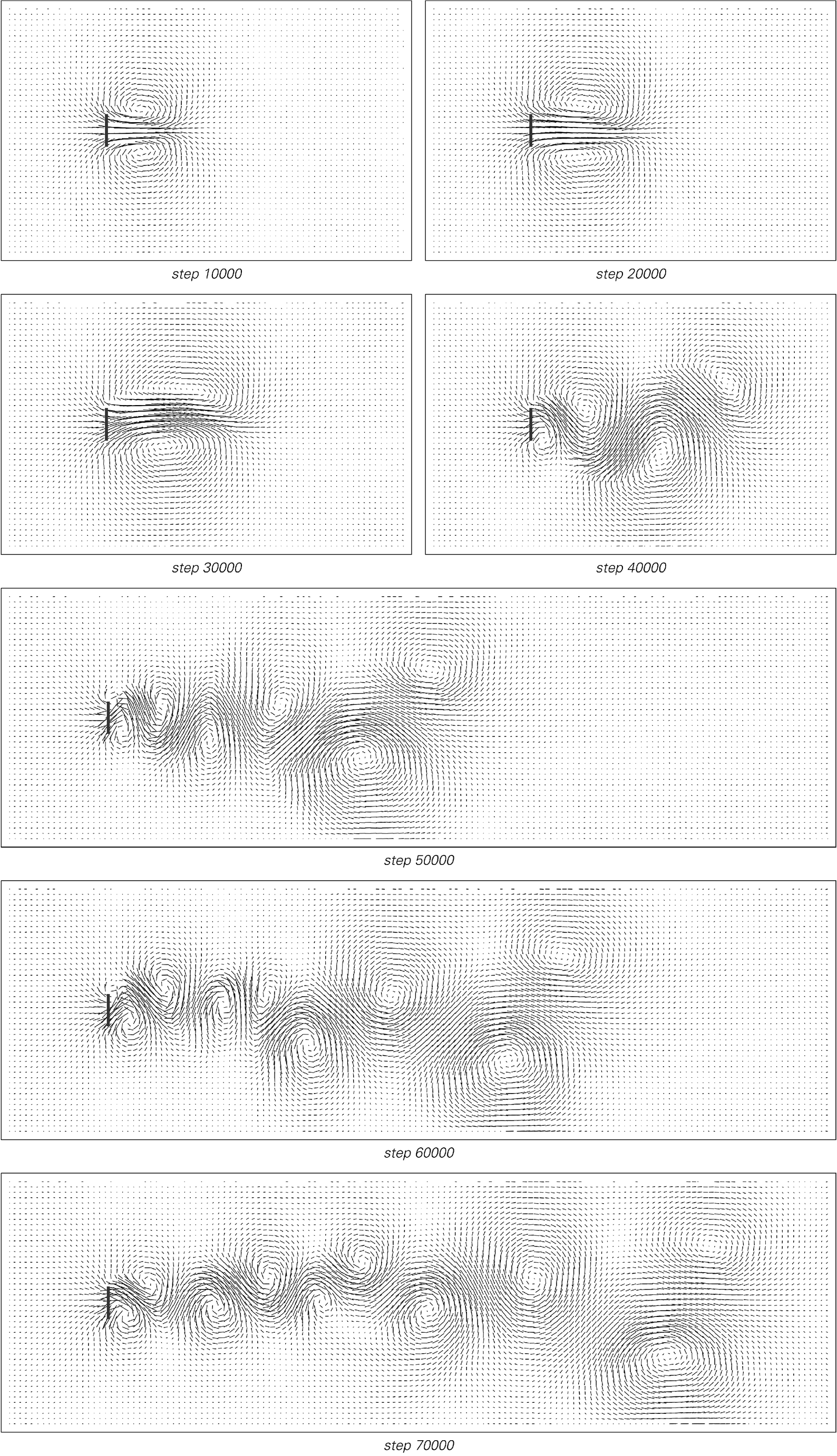
A larger example of the cellular automaton system shown on the previous page. In each picture there are a total of 30 million underlying cells. The individual velocity vectors drawn correspond to averages over 20×20 blocks of cells. Particles are inserted in a regular way at the left-hand end so as to maintain an overall flow speed equal to about 0.4 of the maximum possible. To make the patterns of flow easier to see, the velocities shown are transformed so that the fluid is on average at rest, and the plate is moving. The underlying density of particles is approximately 1 per cell, or 1/6 the maximum possible—a density which more or less minimizes the viscosity of the fluid. The Reynolds number of the flow shown is then approximately 100. The agreement with experimental results on actual fluid flows is striking.



